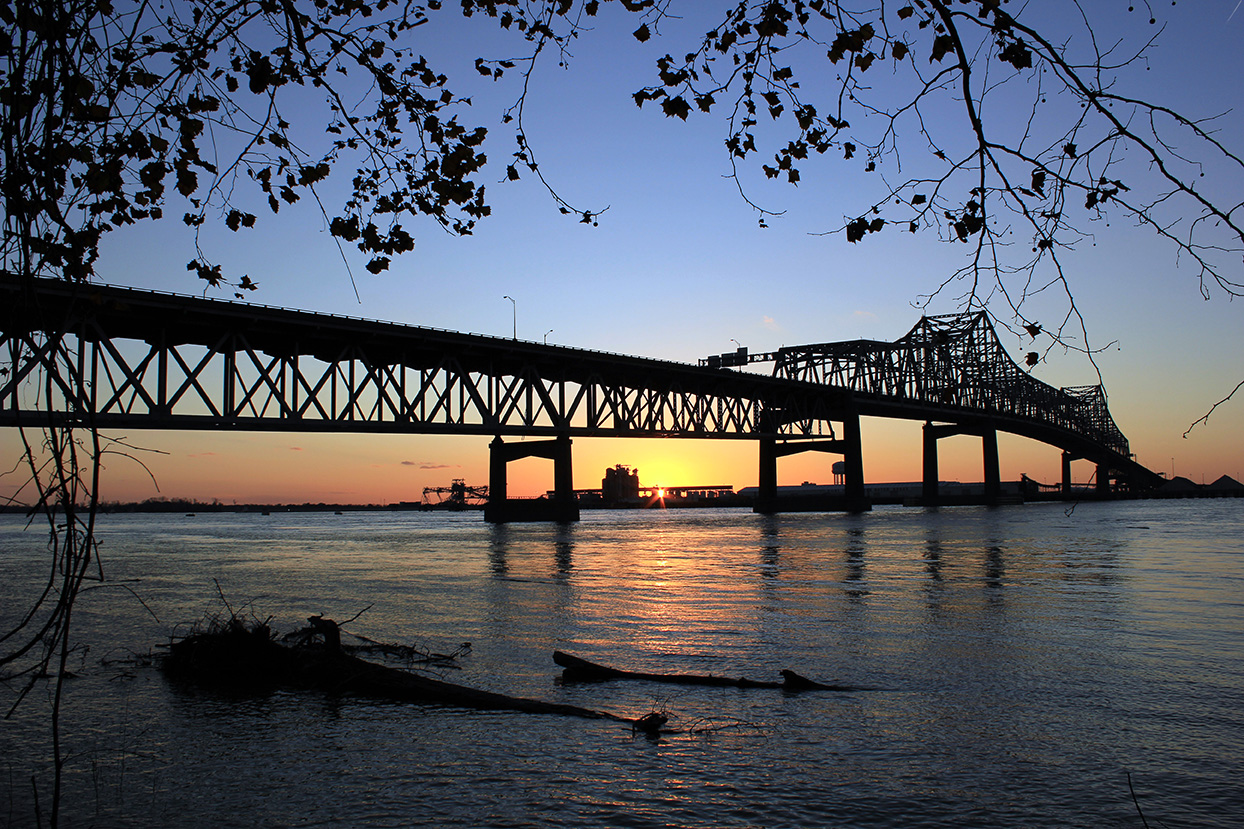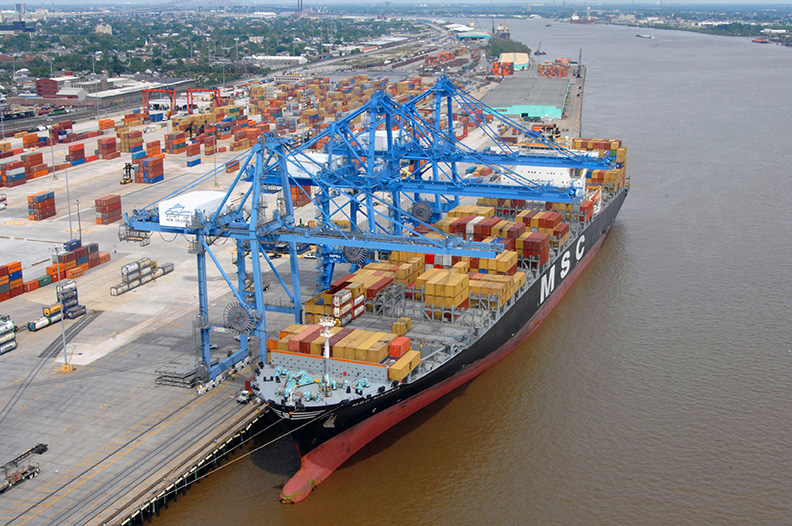
Established in 2000 by Congress, the Delta Regional Authority (DRA) works to improve regional economic opportunity by helping to create jobs, build communities and improve the lives of the 10 million people who reside in the 252 counties and parishes of the eight-state Delta region. DRA makes strategic investments of federal appropriations into the physical and human infrastructure of Delta communities. Through the States’ Economic Development Assistance Program, these investments help to improve transportation and basic public infrastructure and to strengthen the region’s workforce development systems and local business environments.
The Delta Regional Authority supports job creation and economic development through innovative approaches to growing local and regional leadership, increasing access to quality healthcare, and boosting opportunities for entrepreneurs to obtain affordable capital and expand their ventures. DRA forges local, state and regional partnerships throughout the region and with fellow federal agencies to ensure investment, increased capacity, and technical assistance that supports the development of Delta communities and regional clusters. With an impressive leverage ratio of 21.4 to 1, the DRA has leveraged $138 million of its own investments to attract nearly $3 billion in public and private investments into more than 900 projects.
 It is clear that the Mississippi River industrial corridor is the mightiest in the United States, the largest economy on Earth. What is also clear is that job opportunities in the Mississippi River Delta, the most Southern place on Earth, can, and need to, improve.
It is clear that the Mississippi River industrial corridor is the mightiest in the United States, the largest economy on Earth. What is also clear is that job opportunities in the Mississippi River Delta, the most Southern place on Earth, can, and need to, improve.
A quarter of the 100 largest capital investments announced in the South in 2014 were industrial projects located in the Mississippi River Delta and Alabama Black Belt regions, the Delta Regional Authority’s eight-state footprint. Yet, of the 100 largest job announcements made in the South in 2014, only seven were made in Delta counties and parishes.
On a broader scale, of the 100 largest capital investments announced each year in the South over the last 11 years, 247 of the 1,100 — 23 percent — came from the eight-state Mississippi River Delta and Alabama Black Belt region. That is an astounding total considering population in the Delta region accounts for a little more than 8 percent of the South’s total population of 120 million.
This section is a guide to the opportunities the Delta can provide your company. Following this introduction are five case studies of companies based in the Delta. The case studies shed light on the many unique assets that are found in the Mississippi River Delta region. SB&D will publish six more case studies in the spring edition.
 The Mighty Mississippi
The Mighty Mississippi
The Delta is home to the tiniest of hamlets as well as to some of the most thriving metropolitan areas in the country, like Memphis, New Orleans, Baton Rouge and Little Rock. There are two things almost every place in the Mississippi River Delta has in common — the Mississippi River and flat land, and plenty of it.
The Delta region, made up of 252 counties and parishes in eight states (Alabama, Arkansas, Illinois, Kentucky, Louisiana, Mississippi, Missouri and Tennessee) — as defined by Congress and the Delta Regional Authority — is one of the most historic, culturally rich parts of the country. Yet, daily life remains a struggle for some in areas of the Delta, where nearly 10 million people live from the mouth of the Mississippi River in Louisiana to Southeast Missouri, Southern Illinois and Western Kentucky.
The Delta is defined by its spine — the Mississippi River. It is the lifeblood of the Delta region’s economy. Billions of gallons of water from the river are used each day by manufacturers, energy companies and agribusiness in the region. Agriculture dominates land use in the Delta, with soybeans, rice, corn, sugarcane, fish farming and livestock being the primary products.
The Mississippi River is the third largest river basin in the world, connecting 31 U.S. states and two provinces in Canada. The river had an economic effect of about $400 billion in 2014 and supports almost 1.4 million jobs.
The barge industry on the Mississippi River is a $200 billion-a-year business that transports everything you can think of in bulk, including grain, steel, petroleum, sand and gravel. Shipping these goods by barge saves approximately $12 a ton when compared to shipping cargo by rail. Without the shipment of the goods on the river, costs for consumers for just about everything would rise significantly.
In short, the Mississippi River is the largest shipping lane in North America. The vast grain and crop production from the Midwest cannot be competitively shipped to world markets unless it can be done via the Mississippi River. In addition to crops, a large segment of the U.S. gasoline supply is refined by facilities on the Mississippi River.
“The Mississippi River is the major economic artery of the Delta region and its communities,” explained Chris Masingill, Federal Co-Chairman of the Delta Regional Authority. “When the Mississippi thrives, our region and its economy thrive. There are few places that have a natural resource with so much opportunity for job creation, transportation, agriculture and tourism as the Delta region has in the Mississippi River. Through strategic investments in infrastructure and planning, we as Delta leaders prioritize keeping the Mississippi healthy and thriving, so that our communities, businesses and families may remain healthy and thriving,” Masingill said.
About $500 billion of gross municipal product is produced by cities near the Mississippi River every year. More incredible, one out of every seven people in the world are fed by what comes down the Mississippi River. That’s more than a billion people worldwide.
Here are some more eye-popping numbers associated with the Mississippi River and the Delta counties and parishes that are located either directly on the river or nearby: More than half of all goods and services consumed by U.S. citizens are produced with the water that flows through the Mississippi River and its tributaries. Additionally, over 90 percent of the nation’s farm exports are shipped down the Mississippi River to Gulf of Mexico ports for worldwide distribution, much of that to some of the least fortunate countries on the globe.
Yes, the Delta is teeming with large, capital-intensive projects, and the Mississippi River and the abundance of cheap natural gas in this country are the reasons. “You can’t discount the Mississippi River,” said Mike Eades, President of the Ascension Economic Development Corporation, where billions in petrochemical activity is occurring. “People underestimate the interrelationships among industries on the river. For example, few people understand how many air separation plants — oxygen, nitrogen, hydrogen — are on the river and the massive feedstock that is here to support the petrochemical industry. People think those things are everywhere, but they’re not,” Eades said.
Conclusion
The Mississippi River Delta region of the American South is indeed one of America’s most historical. The National Park Service describes the Delta as “Much of what is profoundly American — what people love about America — has come from the Delta, which is often called ‘the cradle of American culture.’ ” The connection between the Delta and the National Park Service, in part, was created when President Obama signed the Omnibus Public Land Management Act of 2009, creating the Mississippi Delta National Heritage Area. That area is contained in the heart of the Delta, from Vicksburg to Memphis.
The Delta is one of the most important regional economies in this country. It offers assets that can be tapped by any sort of industry sector. The following case studies document many of those assets provided by the Mississippi River Delta Region, the most Southern place on Earth.